-
Capital:
Stockholm
-
Currency:
Swedish krona
-
Time zone:
UTC+1 (CET)
-
Driving side:
Right
-
Country calling code:
-
Language(s):
Swedish
Sweden: An Overview
Sweden is a nation so rich in its traditions that on Summer Solstice (Midsommar) the country come to a complete collective standstill so everyone can celebrate! Made up of countless inland lakes and coastal islands, Sweden also is graced with glacier-capped mountains and thick forests, offering an abundance of activity choices. The capitol of Stockholm is a friendly and vibrant blend of old and new. A tapestry of museums, art, and nature offers visitors the chance to immerse themselves in Scandinavian culture. Sweden joined the Schengen Area in 2001. Sweden is host to 30 million visitors each year.
Travel Documents
Your passport must be valid for at least three months beyond your planned date of departure from the Schengen area. You must have at least one blank page for stamps in your passport. If your stay is beyond 90 days, you will need a Travel Visa. If you are a citizen of and ETIAS-eligible country, you will need an approved ETIAS to travel to Sweden beginning in 2021. Learn more about the application process and sign up for ETIAS alerts to get the latest news.
Be sure to make photo copies of all your travel documents to take with you on your trip. It also makes sense to leave copies with a family member or friend back home.
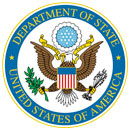
Sweden : An Overview
Dag Hammarskjölds Väg 31,
SE-115 89 Stockholm
Phone: 08-783 53 00
Web site: https://se.usembassy.gov
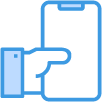
Emergency Sweden Telephone Numbers
| Police: |
112
|
|---|---|
| Ambulance: |
112
|
| Fire and Rescue: |
112
|
| European Union's universal emergency number: |
112 (112 is the equivalent to 911 in the US)
|
Where to Go
-
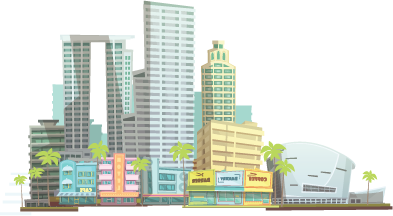
The City
The coastal city of Stockholm is built on a strand of islands and is connected by more than 50 bridges. The cityscape is juxtaposed against the waterscape: you are bound to see a kayaker paddling across the water while you sit terra firma sipping your coffee. Museums include the Nobel, Moderna Museet (Modern Art), and Skansen, Europe’s premier folk museum, encompassing more than 100 buildings. Trip along cobbled streets in search of antique shops in Old Town, or wander through an organic market for picnic provisions to enjoy along the shore or in one of the plethora of green spaces the city has cultivated. Dining here is diverse: from a 20-course grotto restaurant, to a restaurant menu crafted entirely around the Swedish meatball, to New Nordic fare. The city also boasts some epic bars. Accommodations are unique and inspired as well: one hotel has taken residence in a former art deco movie theatre.
-
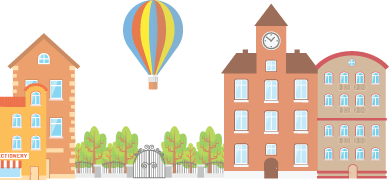
The Coast
Explore the postcard-perfect islands of the Stockholm Archipelago (Skärgården) which reaches 80 miles out across the Baltic Sea. Just getting there is fun; visitors can take a spacious water taxi offering incredible sightseeing along the way. Popular islands include pretty Östhammar, an idyllic seaside village, nature-centric Gålö (oft called “Stockholm's garden of paradise”), or family-friendly Rånö, with a 10km of sandy beach. Gothenburg is the start of the “wild” west coast which stretches up to the coast all the way to Norway. A favorite spot is Väderöarna where seals frolic alongside kayakers and seafood is abundant and sweet. Marstrand has a yachty vibe and stylish coastal accommodations.
-
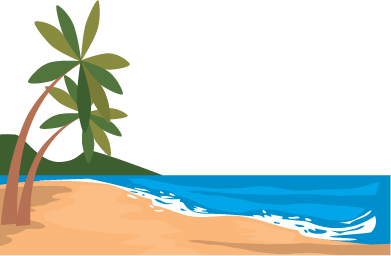
Northern Lights in Swedish Lapland
A magical artic paradise, Abisko National Park offers Aurora Sky Station, created for viewing the heavenly Northern Lights. Another favorite viewing spot is Jukkasjärvi, home to an ice hotel where guests stay in rooms made of snow and ice at -5 °C. And in nearby Luleå a treetop hotel features luxe treehouse suites. Arctic dining is sustainable and hearty: wild salmon, arctic char, gravlax, reindeer, elk, moose. The most authentic and exotic activity you can try is mushing. Visitors can dogsled through the white wilderness. #vacationgoals!
-
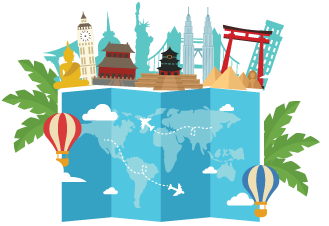
Neighboring Countries
Sweden shares a border with Norway, Finland, and Demark. The four countries are all members of the Schengen Area and will require an ETIAS visa waiver for visa-free travel beginning in January of 2021.
Travel Tips
ELECTRICAL OUTLETS AND ADAPTERS FOR US PRODUCTS
Sweden uses C, & F Plugs. You will need an adapter and maybe a transformer to use products made for the US electrical grid. Sweden runs on a 230 (220) volts, 50 hertz AC current, while US runs on 120 (110) volts and a frequency of 60 Hz AC current. Many American products are able to run on 230 (220) volts, 50 hertz AC current. You need to check your electrical product to make sure it is labeled "dual voltage" before you plug it in, otherwise you may burn out the components rendering it useless. Learn more about the different European plugs and currents here.
PICKPOCKETS AND THEFT
Nearly all crimes suffered by tourists in Sweden are nonviolent and avoidable, however you should be prepared for pickpockets. Europe’s transit systems are notorious for pickpockets.
- Being vigilant is your best friend when you are in high theft areas: train stations, trains, city buses, subways and open air shopping areas.
- Store important documents, money and phones in zippered or buttoned pockets, specialized travel day bags or a money belt.
- You should never leave your bags unattended! Make sure you can see them at all times. Better yet, you should keep in physical contact with your bags in public places.
MOBILE PHONES
First, be sure to check that your phone will work in Sweden. The easiest way to find out is to check with your mobile phone service provider. You can also find out if your service provider offers international plans for Sweden. We recommend signing up for an international plan if you plan on using your smart phone to connect to the internet or use the travel apps you may have installed on your phone. If you decide not to sign up for an international calling and data plan, costs can add up very quickly!
Free WI-FI can be easy to access, but can be very slow or not available in the countryside. Sign up for a Virtual Private Network (VPN) services to secure your phone, tablet or computer when using public Wi-Fi networks. This prevents hackers from accessing your device when using free Wi-Fi.
EUROPEAN TAXIS, BUSES AND SUBWAYS
- Taxis - A good rule of thumb is use a prominent taxi service, one that has a company logo and a telephone number on the car. Avoid using taxis that just have a taxi light on the top of the car. Make sure the taxi driver is using the correct rate for the time of the day and day of the week. Nighttime and weekends have higher rates. When taking a taxi that has a set fare, for example to a Sweden airport, make sure you establish the price before you leave.
- Buses and subways - Most European cities have a great public transportation system. The cost of a transit pass for the entire time of your stay can equal the cost of one or two taxi rides. Check out the ticket options that are offered at subway stations, bus terminals and train stations. Get a transit map or download a transit app to your smart phone. Google maps have transit maps for most Sweden cities.
EXCHANGING CURRENCY IN SWEDEN
The most important thing you should understand is how exchange rates work. The Swedish krona usually has a lower exchange rate compared to the US dollar. So if you want to get 100 Swedish krona and the exchange rate is $10 for one Swedish krona, it will cost you 1 dollar to get 10 Swedish krona . There are many currency conversion apps you can down load to your smart phone to get up-to-date exchange rates.
Many people like to get Swedish krona through their bank before they leave for their trip. Check out what fees the bank charges for this service. Different banks have different fees. These fees can be expensive, so it pays to shop around.
When in Sweden avoid using currency exchange companies or booths. These companies can charge up to 15% to 20% of the amount you are exchanging. Sweden banks can also charge high fees to exchange money. You best bet is to use your ATM card with an established bank to get local currency.
DEBIT CARDS AND ATMS
First, make sure that your ATM card can be used internationally. Second, see what your bank charges for international ATM fees. Third, see what is the maximum amount you can withdraw each day. While there are fees associated with using an ATM card, they are usually much less than the fees charged by Sweden banks and currency exchange companies. ATM fees are a flat fee not a percentage. So when you are withdrawing money using your ATM card, take out the maximum amount to reduce amount of ATM fees you will incur. Also it is a good idea to use bank ATMs instead of third party ATMs, which can charge higher fees.
CASH VS CREDIT CARDS
Using local cash is key for the European tourist. Some businesses do not accept credit cards and many businesses charge a higher price when using a credit card due to the credit card fee they pay to the credit card company. Many businesses will take US dollars, but then you will need to figure out the exchange rate to ensure you are being charged the correct amount and receiving the correct change. Having smaller bills is better than large bills. Also remember to keep your cash secure in pickpocket proof pockets or a money belt.
US credit cards are widely accepted across Sweden. Just in case, check with bank to be sure your credit card will work in Sweden. Before you leave on your trip, sign up for a credit card that has no foreign transaction fees. If you don’t, you may be in for a surprise when you get your credit card statement that contains lots of foreign transactions and currency conversion fees.
It makes sense to use a credit card for hotels, car rentals, Eurail pass, upscale businesses and restaurants. Limit the number of credit cards you take with you. Bring one back up credit card in addition to the main card you intend to use. Be sure to contact your credit card company and let them know the dates you will be traveling abroad.
TIPPING IN SWEDEN
Generally speaking, if someone in the service industry provides great service for you, a tip of a couple of euros is acceptable, but not required.
- Restaurants - 5% to 10%, with 10% being for over the top service. Be sure to check to see if service has already been included in the bill
- Taxis - round up to the nearest Swedish krona, for example, if the fare is 5 Swedish krona give them 6
- Hotel porters - 10 Swedish krona for every bag
Medical Information
Here’s the good news: most of Europe, including Sweden, has a universal health care system that takes care of everyone – including foreigners. If you need healthcare due to illness or injury while traveling in Sweden, you won’t have to worry about getting treated. There will be out-of-pocket costs, but those are generally reimbursable depending on your health insurance.
IMPORTANT HEALTHCARE HINTS
- Pack enough of any prescription medications for the length of your stay, in their labeled, original containers. It is smart to add a few more pills than you need, just in case you stay longer.
- Bring a small first aid kit with over-the-counter necessities.
- In an emergency call 112, that’s the “911” in Europe.
- If you have a non-emergency health issue, go to the nearest pharmacy first. Sweden pharmacists can actually diagnose and prescribe medications for minor issues like sore throats, sinus and stomach issues and minor aches and pains.
- If the pharmacist can’t help you, go to a clinic. They’re much like our stateside urgent care clinics, and providers can order any tests you might need like x-rays.
- Ask for a House Call. Your hotel will most likely be able to have a physician come to your room if need be.
- Most embassies and consulates have lists of physicians and hospitals in major cities. Go on the U.S. Embassy’s site, choose your destination and look under U.S. Citizens Services section.

